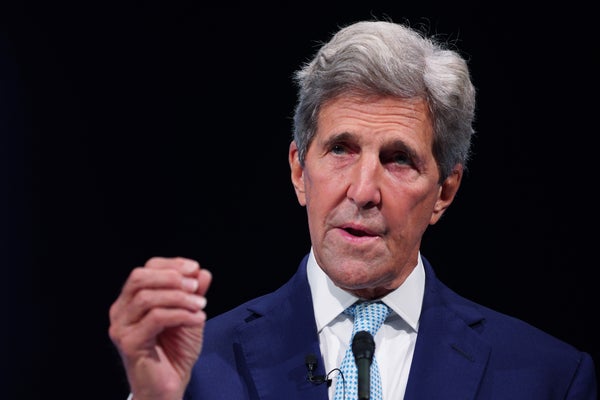A global pledge to reduce methane emissions took two steps forward yesterday as 24 countries signaled they would join the effort and donors committed $200 million to the cause.
The pledge now includes nine of the world’s top 20 methane emitters, representing about 30 percent of global emissions.
“If we act together, we can really make a difference because rapidly reducing global methane emissions is the single fastest strategy we have to limit global warming,” Frans Timmermans, vice president of the European Commission, said at the opening of a ministerial meeting on the Global Methane Pledge.
On supporting science journalism
If you're enjoying this article, consider supporting our award-winning journalism by subscribing. By purchasing a subscription you are helping to ensure the future of impactful stories about the discoveries and ideas shaping our world today.
The joint pledge was announced by the United States and the European Union last month at a gathering of the Major Economies Forum on Energy and Climate. Countries that sign up commit to a collective goal of reducing global methane emissions by at least 30 percent by 2030 from 2020 levels.
Methane is a highly potent but short-lived greenhouse gas that is responsible for about half of the 1.1 degrees Celsius of warming that has occurred since the 1850s.
If the pledge is successful, it could reduce warming by at least 0.2 degrees Celsius by 2050, according to the White House. And because methane stays in the atmosphere for less time than carbon dioxide, reducing its presence could have a more immediate impact, say scientists.
Even a small reduction in global warming could matter given how the world is pushing up against the limits of the Paris climate agreement, which seeks to hold global temperature rise to 1.5 degrees Celsius.
The global methane pledge still faces major hurdles, however. At the top of the list is a lack of accurate data and monitoring to determine where methane pollution is happening.
To address that challenge, the European Union is working with the U.N. Environment Programme to establish an international methane emission observatory, said Timmermans.
The new methane pledge also is missing an enforcement mechanism, as well as sector-specific goals or national targets. That means each country commits to doing the best it can, an amorphous target that can make it difficult to hold individual countries responsible (Climatewire, Sept 20).
In addition to initial support from Argentina, Ghana, Indonesia, Iraq, Italy, Mexico and the United Kingdom, major methane emitters such as Nigeria and Pakistan—as well as countries highly vulnerable to the impacts of climate change—have joined the initiative. That brings the total to 32 nations plus the European Union.
Timmermans and U.S. climate envoy John Kerry encouraged those countries to reach out to others ahead of climate talks in Glasgow, Scotland, at the end of the month where the pledge will be launched officially. Kerry said he hoped to have more than 100 countries commit their support by then.
“We know exactly what is causing this, and yet people are slow on the uptake,” Kerry said. “We need critical mass.”
Some of the most vital countries to the methane effort have not indicated support for the initiative. That includes the world’s top three methane emitters China, Russia and India.
Russian climate envoy Ruslan Edelgeriev said yesterday that the country is keeping an eye on the initiative and that Russia supports a joint monitoring effort to address uncertainty around methane emissions.
Some progress has been made. The E.U. has reduced emissions from fossil fuels by more than 65 percent in the past three decades, and it is working on legislation that would reduce methane emissions across its supply chain, including from fossil fuel imports, said Timmermans.
Canada plans to introduce regulations designed to curb methane emissions from its oil and gas sector by at least 75 percent below 2012 levels by 2030. Nigeria’s latest climate targets include a goal of reducing methane emissions by 60 percent by 2031.
In Rwanda, where more than 65 percent of total emissions comes from methane related mostly to livestock production, the country is working to improve livestock fodder and manure management, said Juliet Kabera, director general of Rwanda’s Environment Management Authority.
Fossil fuels for energy production, agriculture and waste account for the largest proportion of human-caused methane emissions. But technologies are available to reduce around a third of current emissions by 2030, according to an assessment by the UNEP and Climate & Clean Air Coalition.
More than 22 philanthropies have agreed to offer $223 million to support methane reduction efforts, similar to a drive in 2016 that pooled more than $50 million to phase out superpollutants known as HFCs.
Several green groups came out in support of the new pledges.
“It’s encouraging to see how quickly momentum for methane mitigation is building ahead of COP 26, including with both big emitters and the most vulnerable countries,” Durwood Zaelke, president of the Institute for Governance & Sustainable Development, said in a statement.
Reprinted from E&E News with permission from POLITICO, LLC. Copyright 2021. E&E News provides essential news for energy and environment professionals.
